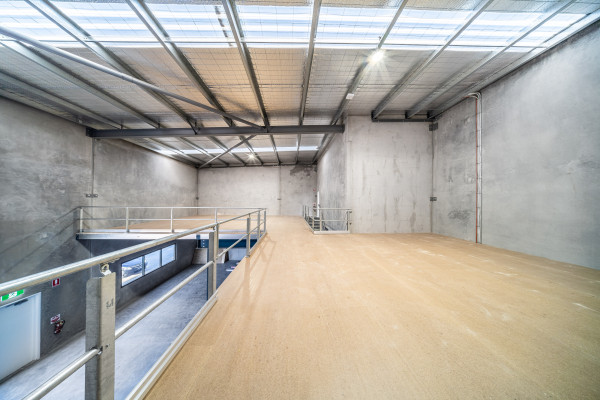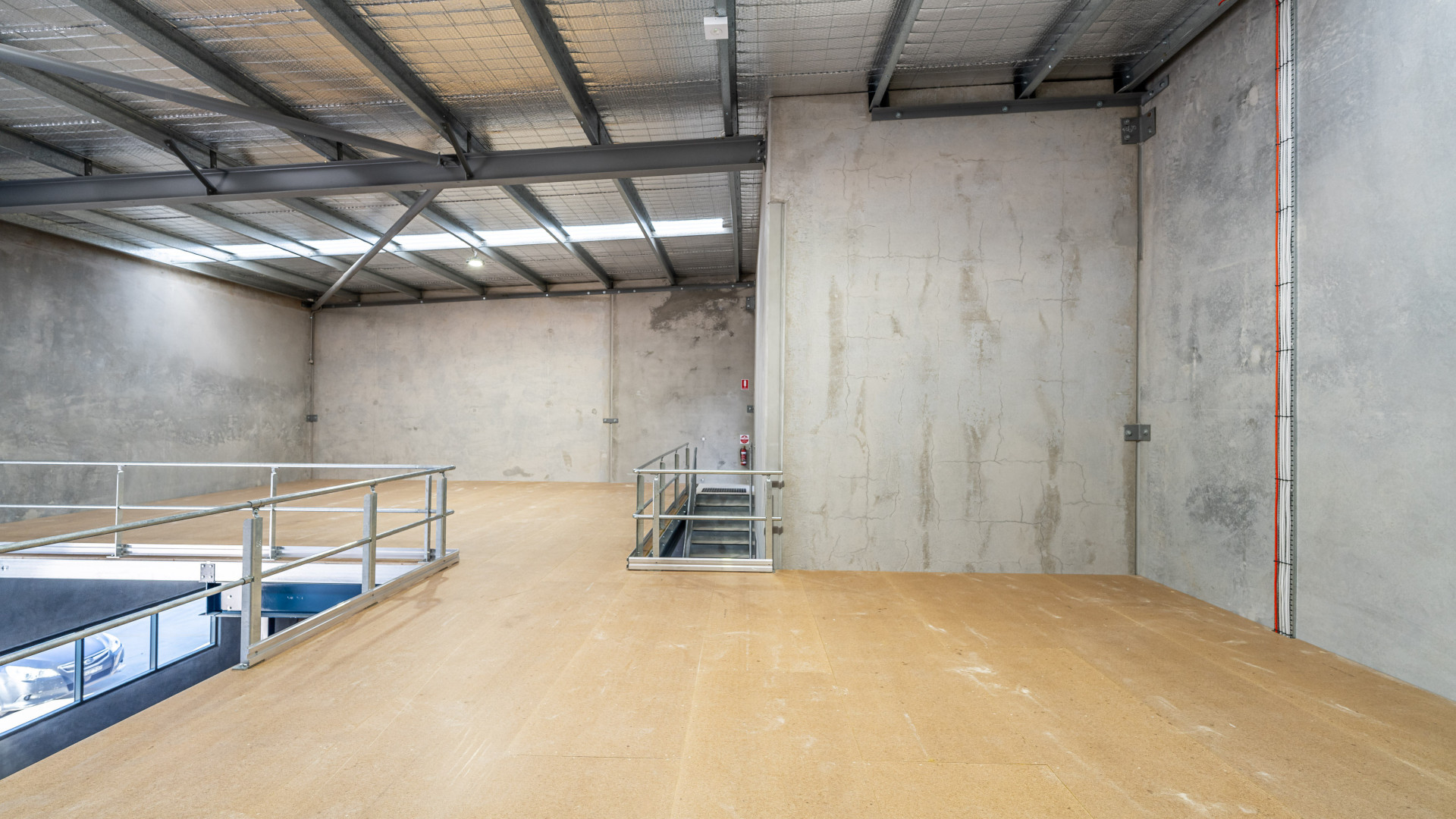Keeping your warehouse safe, especially with a mezzanine floor system in play, is key to protecting your team and keeping things running smoothly. With mezzanine systems, your warehouse functionality gets a major upgrade, adding extra storage and streamlining your workflow. However, they can introduce unique hazards that must be managed effectively. This useful guide outlines best practices for minimising hazards in warehouses with mezzanine systems, focusing on key areas of risk and implementing safety measures to mitigate them.

Understanding Hazards in Warehouses with Mezzanine Systems
Warehouse safety hazards take many different forms and can pose significant risks to workers. Identifying these hazards is the first step in preventing accidents and ensuring a safe working environment. Common hazards in warehouse environments include slips, trips, and falls, forklift accidents, falling objects, manual handling injuries and chemical exposure. When mezzanine systems are added to the mix, additional considerations such as adequate safety barriers and railing must be addressed.
Risk in Warehouse Operations
Managing risks effectively is a must in any warehouse setting. This means taking a close look at potential hazards and finding smart ways to tackle them. Here is what to keep an eye out for:
-
Structural integrity: Ensuring the mezzanine floor is designed and built to support the intended load capacity.
-
Fall protection: Installing safety barriers, handrails, and non-slip surfaces to prevent falls from elevated platforms.
-
Access and egress: Providing safe access points such as stairs or lifts and ensuring clear pathways for evacuation.
Common Warehouse Safety Hazards and Prevention Strategies
Warehouses present various safety challenges that may have to be handled differently in the presence of mezzanine systems. Identifying and addressing these hazards is the first step towards creating a safer work environment.
1. Slips, Trips and Falls
Hazard: Wet or slippery floors, cluttered aisles, and uneven surfaces are common causes of slips, trips, and falls in warehouses.
Prevention: Keep floors clean and dry, use non-slip mats and ensure clear walkways. Promptly clean up spills and provide slip-resistant footwear.
2. Falling Objects
Hazard: Improperly stacked or overloaded shelves can result in falling objects, endangering workers below.
Prevention: Train employees on proper stacking techniques, use safety nets or barriers to catch falling objects and regularly inspect storage racks for stability and security.
3. Manual Handling Injuries
Hazard: Lifting heavy objects manually can lead to strains, sprains, and other musculoskeletal injuries.
Prevention: Provide training on correct lifting techniques, encourage the use of automated industrial mezzanine solutions or implement ergonomic workstations to reduce physical strain.
4. Chemical Exposure
Hazard: Hazardous chemicals stored in warehouses can pose health risks if mishandled.
Prevention: Maintain proper labelling and storage of chemicals, provide appropriate personal protective equipment (PPE) such as gloves and goggles. Train workers on safe handling and disposal of chemicals.

Strategies for Minimising Warehouse Safety Hazards with Mezzanine Systems
Adopting effective strategies to reduce warehouse safety hazards calls for a multifaceted approach. The following points provide actionable steps to enhance warehouse safety and ensure compliance with industry standards:
Coordinate Proper Training Programs
Training is a cornerstone of warehouse safety. Ensure that all employees complete training on equipment operation, safe lifting techniques, hazard recognition and emergency procedures. Regular refresher courses keep employees updated with the latest safety protocols.
Keep Clear and Tidy Work Areas
A well-organised warehouse is less likely to experience accidents. Implement regular housekeeping practices to keep work areas tidy. Clearly mark aisles, storage locations, and emergency exits to prevent trips and falls. What is visibility like? Install adequate lighting throughout the warehouse to avoid fumbling around in the dark.
Invest in Proper Material Handling Equipment
Quality material handling equipment can significantly reduce the risk of accidents. Ensure that all equipment, including forklifts and pallet jacks, is well-maintained and inspected regularly. Provide employees with the necessary PPE and enforce its use when operating machinery.
Promote Ergonomic Practices
Ergonomic practices help prevent musculoskeletal injuries. Provide ergonomic tools and equipment, such as adjustable workstations and lifting aids. Encourage employees to take regular breaks and practise proper lifting techniques to avoid strains.
Conduct Regular Safety Inspections
Regular safety inspections are crucial for identifying and addressing hazards. Schedule routine inspections of equipment, storage racks, and facilities to ensure compliance with health and safety standards. Encourage employees to report any safety concerns or hazards they encounter.
Make Safety a Team Effort
Creating a culture of safety involves open communication and active participation from all employees. Encourage discussions about safety issues and recognise employees who demonstrate safe behaviours. Implementing safety awareness programs can also contribute to a safer workplace.
Ensuring Mezzanine Floor Safety
Different load types must be considered to ensure that the warehouse mezzanine floor can safely support the intended use and weight requirements. Consulting with experienced professionals, like our team at Unistor, can help determine the appropriate load capacity and design to minimise warehouse safety hazards.
Compliance with Safety Regulations
Adhering to building codes and standards is essential for ensuring mezzanine floor safety. Regulations cover fire safety, load-bearing capacity, access, egress, handrails and balustrades. Compliance helps avoid legal consequences and ensures the safety of all personnel.
Fire Safety: Be Prepared and Protected
Fire safety is a crucial consideration for mezzanine floors. Regulations include the installation of fire-rated materials, sprinkler systems, smoke alarms, fire exits and fire extinguishers. Proper fire safety measures are legally required and essential for protecting workers.
Light the Way to Safe Access
Safe access to mezzanine floors involves installing appropriate stairs, railings, and guarding. Adequate lighting is also crucial for visibility and productivity. Ensuring compliance with accessibility and lighting standards helps create a safe and efficient workspace.
Partner with Unistor for Quality Mezzanine Solutions
Minimising hazards in warehouses with mezzanine systems requires a proactive approach and a commitment to safety. By identifying common warehouse safety hazards and implementing preventive measures, you can create a safer work environment for all employees.
To remain on top of safety standards and best practices, partnering with Unistor can make all the difference. With over thirty years of industry experience, our team of experts is ready to provide tailored advice, assist with mezzanine floor inspections and address any concerns about the structural integrity or safety features of your mezzanine floors. Do not leave safety to chance—contact Unistor today for professional guidance and support.Does your mezzanine system meet the highest standards of structural integrity and safety? Reach out to Unistor now for all your mezzanine needs and take a proactive step towards safeguarding your workplace.


